Up to 30 percent of all adults suffer from insomnia, making the condition the second most common medical complaint, after pain. If you’re one of the victims unable to shut down systems at night and take a dream break–if you’re miserable during the day because you’re short on z’s, take heart–it could be worse. You could, for instance, have a bizarre sleep disorder such as sexsomnia. That’s right. Sexsomnia, otherwise known as “sleep sex,” is a real condition that can cause sufferers to do unwanted, dangerous, or even illegal sexual things after they go to sleep.1 “Sexsomnia is a Real Condition.” 8 May 2013. BBC. 1 August 2013. http://www.bbc.co.uk/news/health-22446378
Imagine waking up to discover that you had sex with strangers after you tucked in for the evening–and you don’t remember a thing about it. Even worse, imagine discovering that you forced yourself upon an unwilling partner. While women suffering from sexsomnia typically just masturbate or make aroused noises during sleep, men more often act out, engaging in fondling, intercourse, or even rape.2 Cline, John, PhD. “Sleepless in America.” 12 February 2009. Psychology Today. 1 August 2013. http://www.psychologytoday.com/blog/sleepless-in-america/200902/sexsomnia The sexsomniac may end up paying the legal price, but recently, the courts have started accepting the diagnosis as an excuse. Just a few months ago, courts in Great Britain dismissed an accused rapist named Andrew Machin after he proved his encounter happened while he was in the throes of a sexsomnia episode. And in Denmark, a man accused of molesting two 17-year-old girls got off when he proved that he suffered from sexsomnia.3 “Sexsomnia Sleep Disorder Gets Denmark Man Acquitted of Molestation Charges.” 10 April 2013. Huff Post World. 1 August 2013. http://www.huffingtonpost.com/2013/04/11/sexsomnia-sleep-disorder-denmark-man-cleared-molestation-charges_n_3060813.html
Authorities worry that these legal precedents will encourage offenders to use sexsomnia as a false excuse for rape and perverse behavior, but experts say that would be difficult to do. First of all, sexsomniacs nearly always have a lifelong history of related sleep disorders. (Although it should be noted that some sleeping pills may trigger episodes.4 Cara Santa Maria. “Ambien Side Effects: What Does Science Say About The Sleep Medication? (Video).” Hufffington Post. Posted: 12/03/2012. (Accessed 4 Aug 2013.) http://www.huffingtonpost.com/2012/12/03/ambien-side-effects-sleep_n_2199712.html ) Also, there are tests that can monitor brain waves during sleep. It’s hard to fake it, the experts say.
“Sexsomnia is a very real condition,” says Matthew Walker, professor of neurology at the National Hospital for Neurology and Neurosurgery in London. “People who suffer from sexsomnia are those who have an extended history of sleepwalking or other unusual sleep behaviors. It doesn’t just occur out of the blue.”
Though you may never have heard of the condition, sexsomnia afflicts about one percent of the population. Episodes get triggered in much the same way that sleepwalking gets triggered. The sexsomniac falls into deep sleep, but then something suddenly arouses him. Part of his brain wakes up, but most of it remains in the sleep state.5 “4 of the Strangest Sleep Disorders Ever.” 24 June 2013. Huffington Post. 1 August 2013. http://www.huffingtonpost.com/2013/06/24/strangest-sleep-disorders_n_3479976.html In other words, the sexsomniac never fully comes to consciousness, and yet the body hops into action. The triggering disturbance can be an external noise or event, stress and anxiety or it can be the result of other sleep disorders such as sleep apnea or sleep-related epilepsy. Drinking alcohol before sleep raises the risk of having an episode. When it’s over, the sexsomniac remembers nothing at all, unless his condition comes as a result of sleep-induced epilepsy, which apparently is the only form of sexsomnia that doesn’t confer amnesia.
Partners describe their sexsomniac mates as glassy eyed and vacant during an episode. While many of us may have had relations with deadbeat partners who seemed to snooze through the encounter, experts concur that sexsomnia is something else entirely. Dr. Chris Idzikowsi of the Edinburgh Sleep Clinic says, “It is instinctive behavior. People are not conscious at the time. When you are in a deep sleep, moral and rational decision-making do not occur.”
Sexsomnia is one of a set of sleep disorders known as “arousal parasomnias.” Mental health articles say parasomnias include unwanted and abnormal behaviors, emotions, and movements that occur during sleep, such as sleepwalking, sleep eating, and night terrors. Arousal parasomnia occurs when the brain gets caught in the transition between a deep, non-REM sleep-state, and a waking state. In general, arousal parasomnias are far more common among children than among adults. Sleepwalking, for instance, affects up to 17 percent of all children, but only four percent of adults walk in their sleep. Likewise, up to six percent of children suffer from frequent night terror episodes, but the condition affects far fewer adults.6 “Night Terrors.” WebMD. 1 August 2013. http://www.webmd.com/sleep-disorders/night-terrors
On the other hand, sexsomnia and sleep-related eating disorders are almost exclusively adult conditions. But as pointed out above, those who develop these conditions usually have a lifelong history of other parasomnias. They start out as sleepwalking kids, and end up as sleep-fornicating adults.
Sexsomniacs can attempt to control their condition by ensuring they get restful sleep, avoiding alcohol in the evening and sleeping pills, reducing stress, and if they suffer from sleep apnea, getting a c-Pap machine. But there are no guarantees that these things will keep the pants on, so if you live with or near a sexsomniac, your best bet is to protect yourself. Dr. Raman Alhotra of the Saint Louis Sleep Disorders Center recommends, “sleeping in a separate bedroom, locking doors or even putting alarms on doors to wake people up and make them aware of what is happening.”
References
| ↑1 | “Sexsomnia is a Real Condition.” 8 May 2013. BBC. 1 August 2013. http://www.bbc.co.uk/news/health-22446378 |
|---|---|
| ↑2 | Cline, John, PhD. “Sleepless in America.” 12 February 2009. Psychology Today. 1 August 2013. http://www.psychologytoday.com/blog/sleepless-in-america/200902/sexsomnia |
| ↑3 | “Sexsomnia Sleep Disorder Gets Denmark Man Acquitted of Molestation Charges.” 10 April 2013. Huff Post World. 1 August 2013. http://www.huffingtonpost.com/2013/04/11/sexsomnia-sleep-disorder-denmark-man-cleared-molestation-charges_n_3060813.html |
| ↑4 | Cara Santa Maria. “Ambien Side Effects: What Does Science Say About The Sleep Medication? (Video).” Hufffington Post. Posted: 12/03/2012. (Accessed 4 Aug 2013.) http://www.huffingtonpost.com/2012/12/03/ambien-side-effects-sleep_n_2199712.html |
| ↑5 | “4 of the Strangest Sleep Disorders Ever.” 24 June 2013. Huffington Post. 1 August 2013. http://www.huffingtonpost.com/2013/06/24/strangest-sleep-disorders_n_3479976.html |
| ↑6 | “Night Terrors.” WebMD. 1 August 2013. http://www.webmd.com/sleep-disorders/night-terrors |




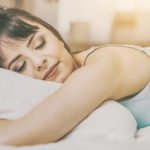
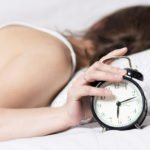
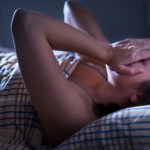
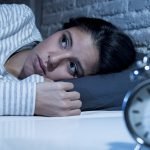
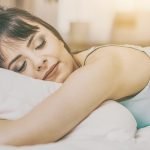



I CAN HONESTLY SAY IM A 27
I CAN HONESTLY SAY IM A 27 YEAR OLD FEMALE AND HAVE BEEN SUFFERING FROM THIS EXTREMELY WEIRD CONDITION…What makes this condition worse, is the fact that i CANNOT remember ANYTHING! I can SERIOUSLY remember my life from the age of 2! The mere fact of having to WAKE UP and IM on my KNEES! %200 CONFUSED…and Embarrassed! I’ve experienced this in two separate relationships. One guy actually sat up and TIMED my “episode” and gave details…word by word(IN DISGUST). Yes! i am aware that certain life experiences can/may have a contributed to these ”outbreaks”. I don’t sleep walk, but i have had conversations, long conversations. To the point where a guy assumed i was having a phone conversation under the covers, which led to him not bothering me! lol WOW.
MY REAL QUESTION is… why does it APPEAR to the person “VIEWING” my actions, that im having sex with A GHOST?